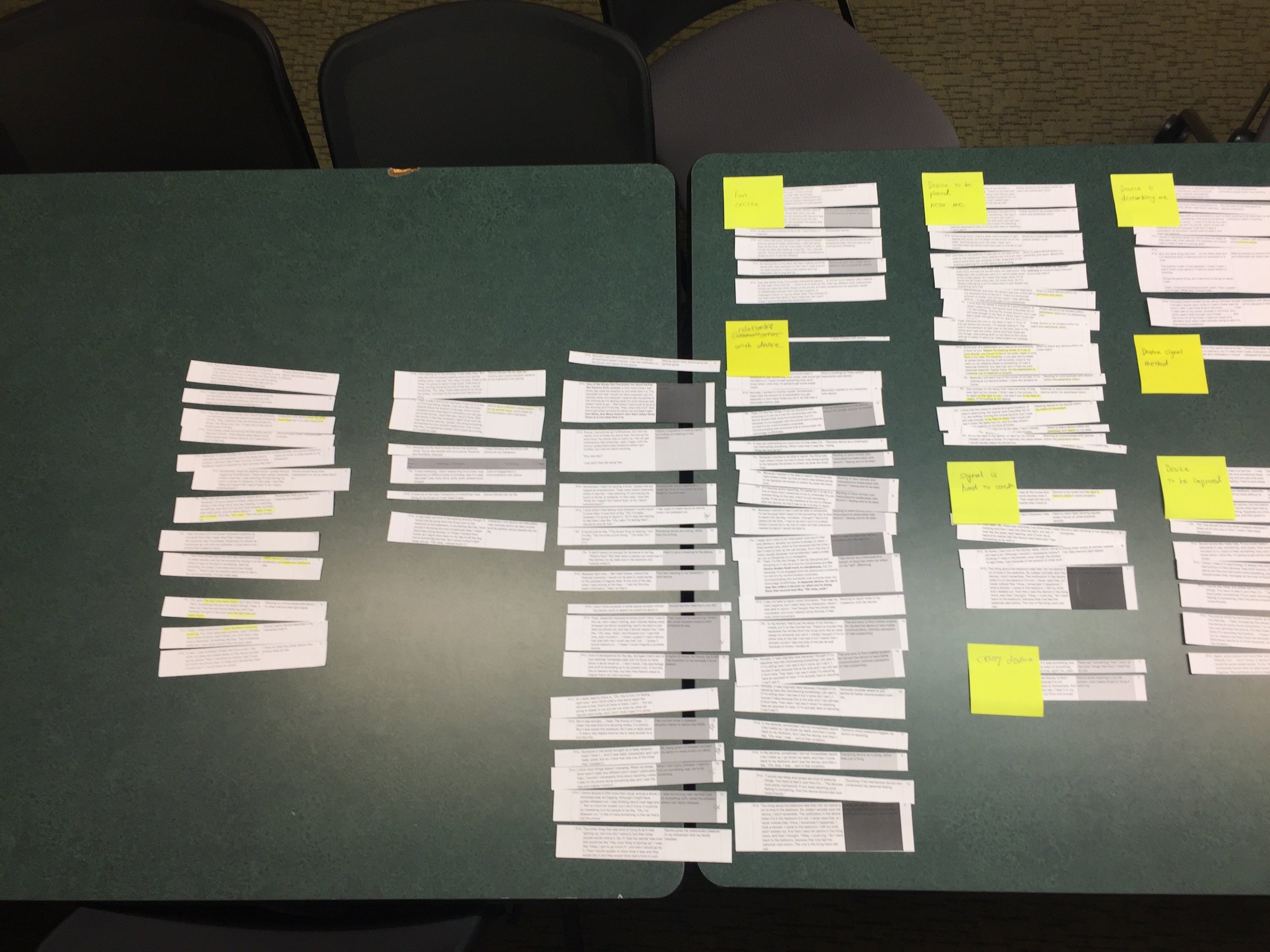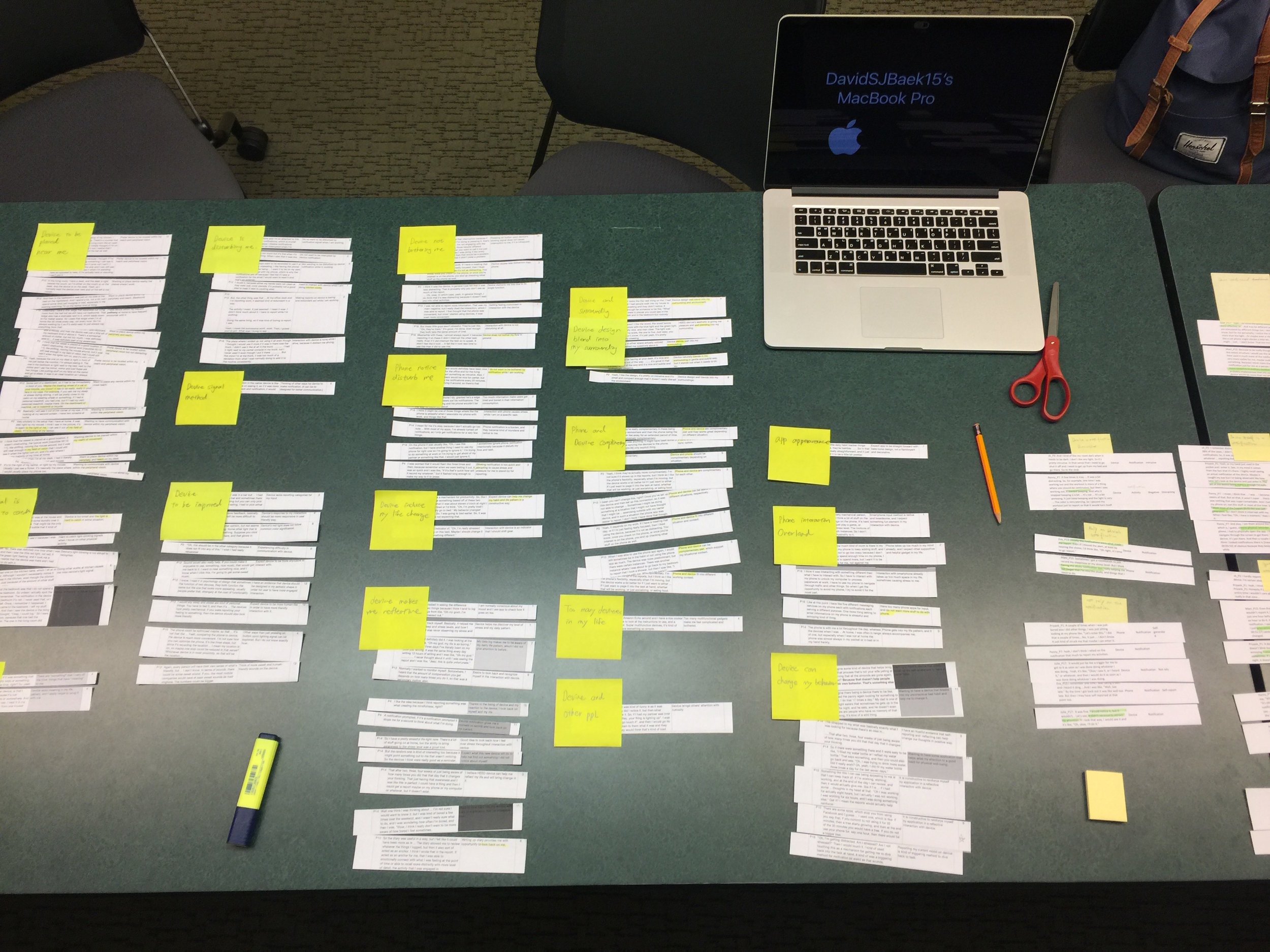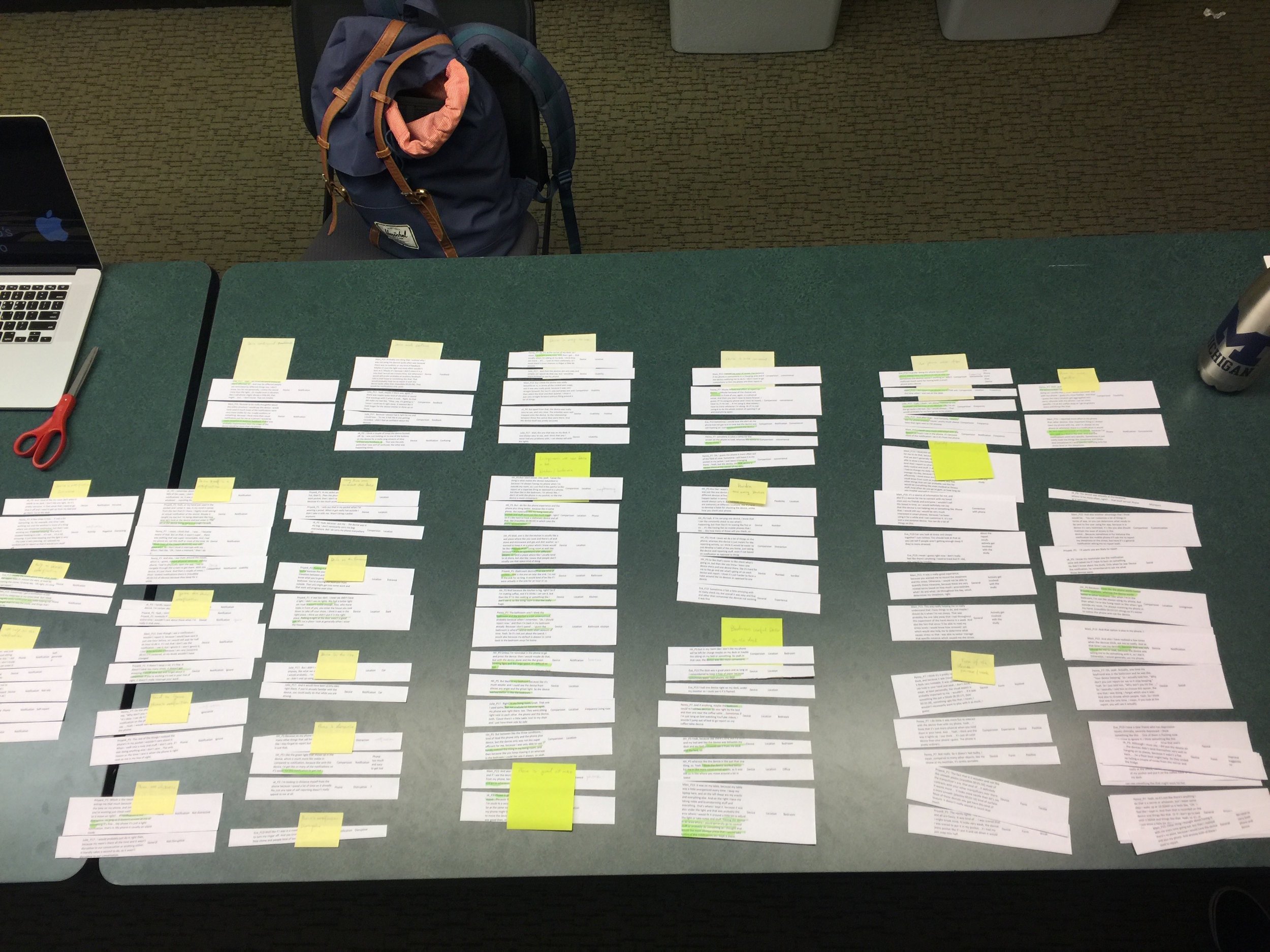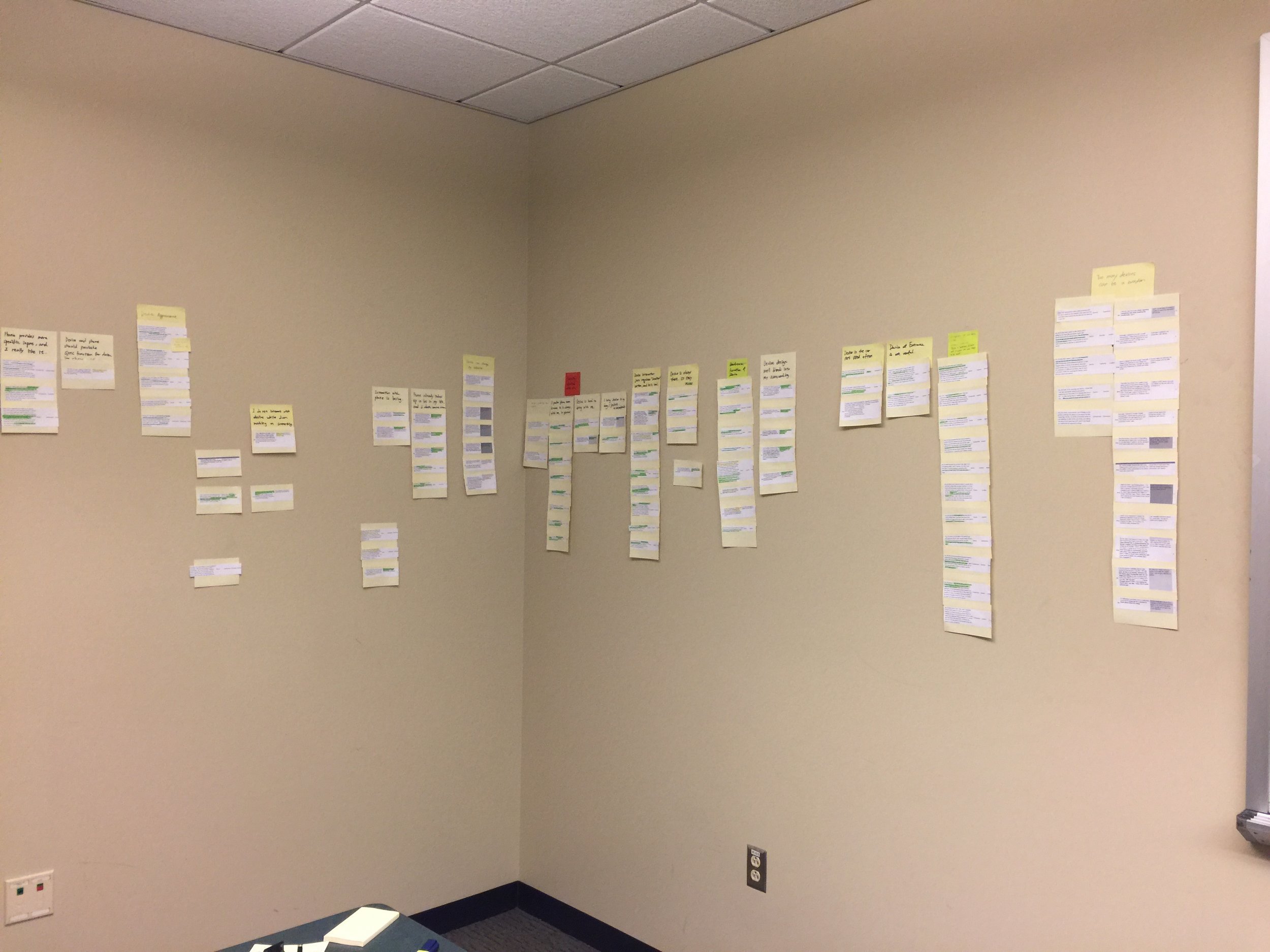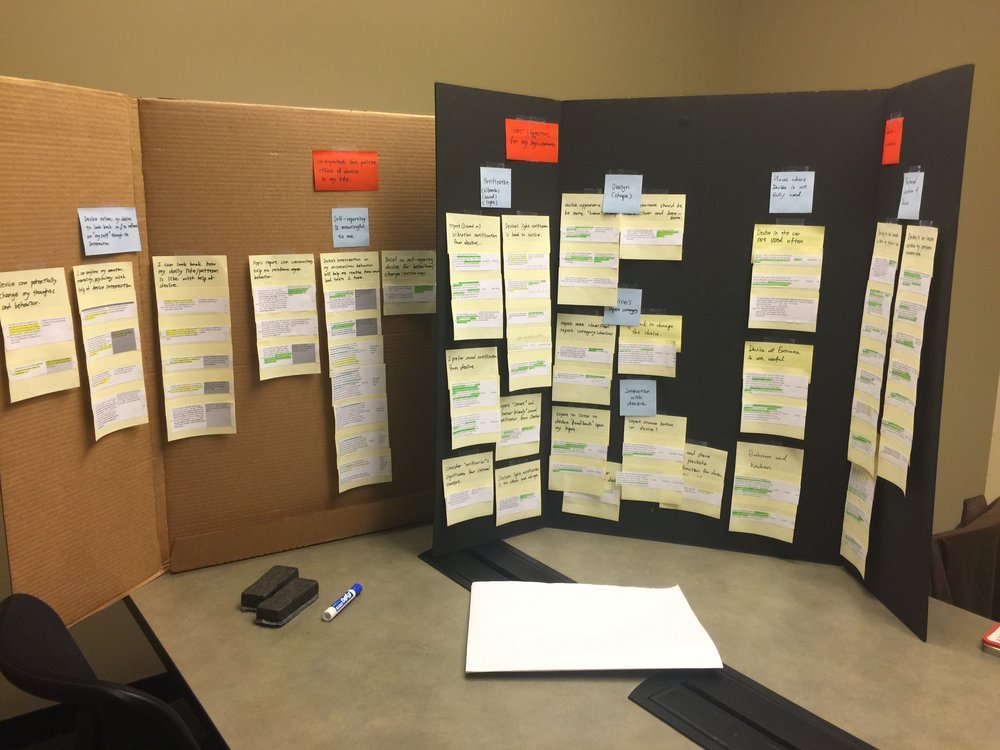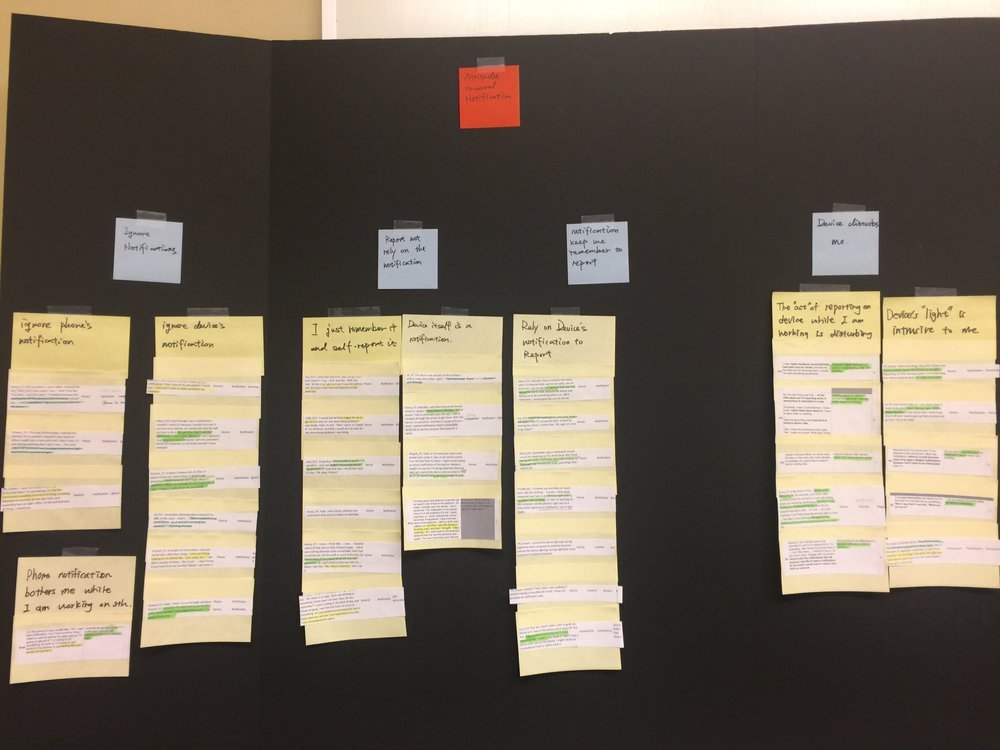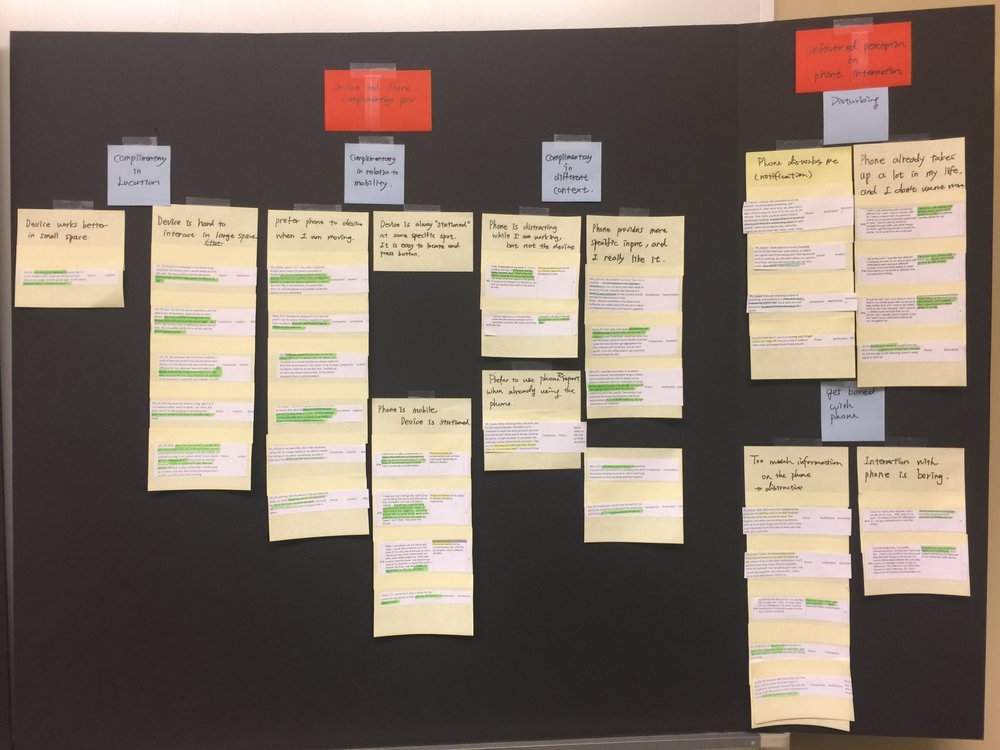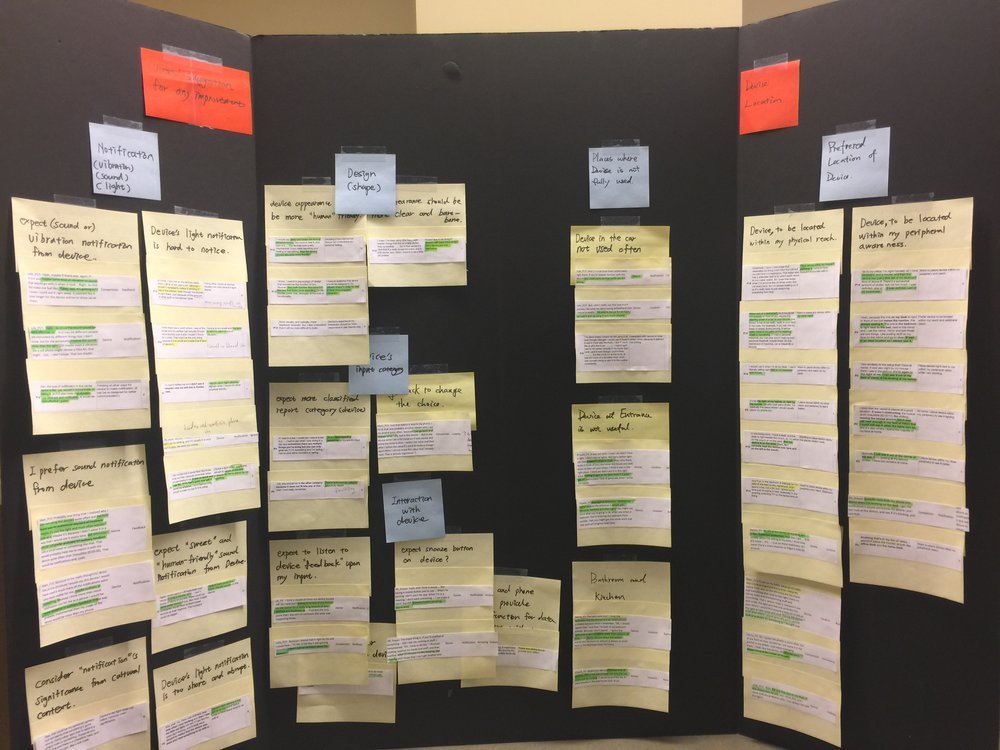HEED Research
Discovering UX Design Requirements of a Situated Self-reporting Device “HEED”
My Role: UX Researcher
Duration: 9 months
Team: Gaurav Paruthi, Shriti Raj, Seungjoo Baek, Chuyao Wang, Chuan-che Hwang
Goal: To discover UX design requirements of Situated Self-reporting Device "HEED"
Keywords: Situated Self-reporting Device (HEED), Usability, Design Requirement, Behavioral Change
Published in Association for Computing Machinery Journal 2018
Introduction
Research Phase 1 (HEED and Phone App User Test)
Research Phase 2 (Qualitative Data Generation & Analysis)
Findings (Limitedly presented here)
My Takeaway & Reflection
Academic Reference
1. Introduction
1.1. Interaction Ecologies Group
Supervisior : Dr. Mark W. Newman / Project Lead : Dr. Gaurav Paruthi.
My role : Qualitative data analysis to generate design requirements of HEED.
Published: ACM IMWUT 2018 (Ubicomp)
1.2. Research Background & Goal
While pervasive technologies and self-reporting devices emerges, the need for design requirements for Situated-Self Reporting (SSR) device increases.
This research targets to suggest design requirements of SSR device by qualitatively exploring the usability of the HEED device throughout two research phases :
Phase 1: Participatory User Test with the HEED Device& the Phone Application
Phase 2: Qualitative Usability Exploration with HEED User
1.3. My Contribution
Specially research phase 2 (Qualitative exploration)
Sep 2017 - May 2018
Analyzed 18 interview transcripts with recordings
Open-coding and Thematic Analysis
Phenomenological and Ethnographic Strategy
Iteratively validated and reduced data
Built up a whole structure of participants' experience
Wrote-up a method part of the final paper
Co-revision and submission of the paper to ACM Journal
(See "Method" and "Findings" for details)
1.4. HEED Research Project Timeline
2. Research Phase 1
This poster summarizes the first phase of the HEED research project.
<Credit to Dr. Gaurav Paruthi, Dr. Chuan-che Huang, Dr. Shriti Raj, Ankita Gupta>
3. Research Phase 2
This section briefly presents the research process, method, and findings of the HEED research. This analysis practice best maintained academic rigor in an active reflection as shown on the below diagram figure 3.1.
Open-coding & Thematic Analysis
Partially, Phenomenological and Ethnographic Approach
3.1. Research Process Overview
<Figure 3.1.>
In doing so as shown above, this analysis produced a structure of participants experience with the HEED device as figure 3.1.2.
3.2. Brief Description of Qualitative Method
I believe that the practice of qualitative data generation and analysis relies on an organic, systematic, and reflective inter-view on a experience and/or a phenomena in a mutual conversation between researcher and participants.
And this requires a certain level of exhaustive and comprehensive interpretation with both proximate and distant approaches to "what happened there."
This qualitative analysis process best maintained rigor in reflection to the criteria described in the above figure 3.1.
In so doing, I structured the participants' experience as shown on figure 3.2.
3.2.1. Qualitative Research Questions
1) Whether the devices were comfortable to use,
2) Whether HEED device and application affected their social interactions,
3) Whether wearing the device increased their stress levels,
4) Whether they would continue using the device in their daily settings.
3.2.2. Extraction Process
Back to the data, there are answers. The initial stage of qualitative research analysis is all about inter-subjective conversation between research and participants.
18 research participants
Audio-recordings
Transcripts
3.2.3. Encode / Decode Stage 1
The extracted significant statements are encoded and decoded iteratively.
3.2.4. Encode / Decode Stage 2
This stage goes through the most lengthy initial data analysis procedure of buildup and breakdown at length.
3.2.5. Encode / Decode Stage 3
The above construction process iterates more exhaustively in reflection to the original data resources which was analyzed in the Extraction Process 3.2.1.
3.2.6. Encode / Decode Stage 4
The above construction process iterates more exhaustively in reflection to the original data resources which was analysed in the Extraction Process 3.2.1.
4. Findings
Due to IRB and personal data protection issue, this section briefly reveals the analysis result with key themes only.
Role of HEED Device & PhoneNotifications
Perceptions of phone use affect use of Heed.
Heed devices serve as a physical reminder.
Notifications are to be ignored for multiple reasons.
HEED and mindfulness.
Complementary Nature of Smartphone and Heed Device
Smartphones when moving, Heed when stationary.
Exhausted with information overload on phone while HEED is not so.
Heed’s low interaction burden in certain situations.
Prefer Heed while engaging in focused work than Phone App.
Prefer Heed while in socializing moments.
Heed while phone is absent.
Thought on the Location of Heed Device
Specific locations device not to be placed.
HEED to be located within my mindfulness, periphery, and physical reach.
Unexpected Social Events Thanks to HEED Device
HEED arises fun factors in my daily life.
Get more attention to my partner thanks to HEED.
Curious attention from the neighbor and my peers.
HEED and my Life
Narratives with my boy, HEED.
Meaning of my interaction with HEED.
HEED is a reflective mirror of my life and my being.
HEED can change my thought and behavior.
5. My Takeaway & Reflection
The Heed research project helped me envision how to explore and develop design requirements of HCI devices with both qualitative and quantitative endeavors.
Particularly, I learned more about how to facilitate my theoretical ground in qualitative research methodology (paradigm) into product-oriented design research practice.
While conducting data analysis of the Heed project, I glimpsed users’ deeply-seated but blurrily-revealed desires to “build up an intimate relationship with HEED” through their interaction: computer, more than just a thing. Therefore, I question to what extent this subject-object notion is relevant in the age of the Internet of Things.
Hereby I suggest further questions to explore in an industry setting.
Under which conditions are the emotionally intimate interactions made?
What symbolic forms of capital and values can be generated in that ecology?
What design requirements can we suggest in that human-computer dynamic?
How can we boost the intersubjective interaction ecologies that bring about human behavior changes in such climates?






